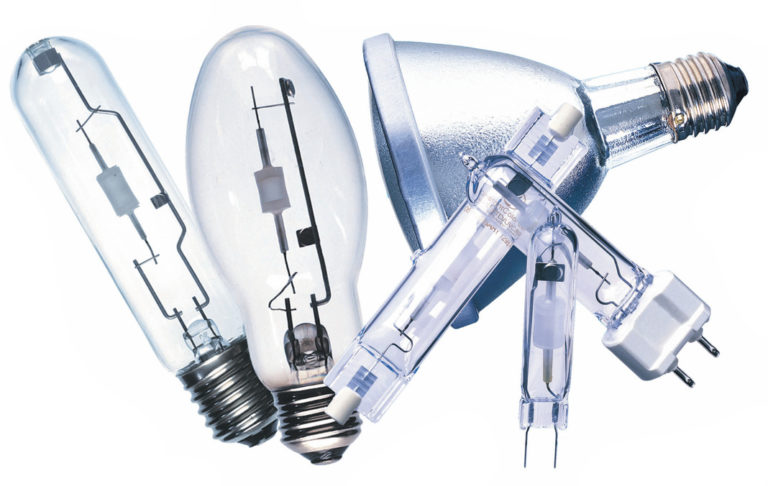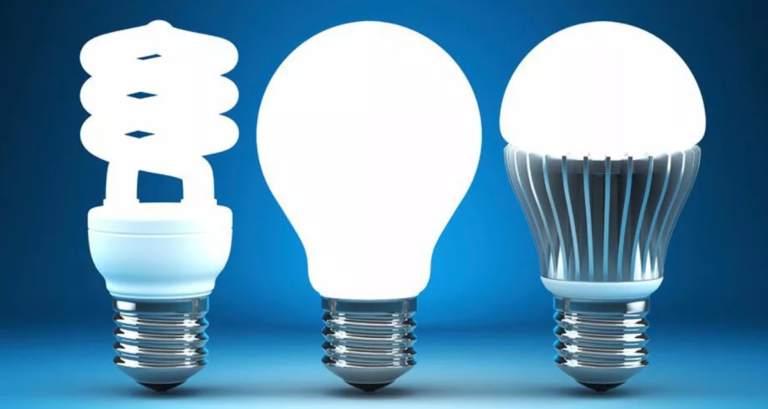Description and principle of the light bulb
What is an incandescent lamp
An incandescent lamp is a source of artificial light, in which light flux is produced by heating a thin metal filament to the glow temperature of a glowing metal. To heat the filament, an electric current is passed through. The first lamps had a filament of charred organic material, such as bamboo, in the form of fiber.
To prevent the filament from burning quickly, air was pumped out of the bulb and sealed. Or the flask was filled with a gas composition that had no oxidizer - oxygen. These gases are called inert gases - argon, neon, helium, nitrogen, etc. These gases are so called because they do not react with metals, i.e. they are inert.
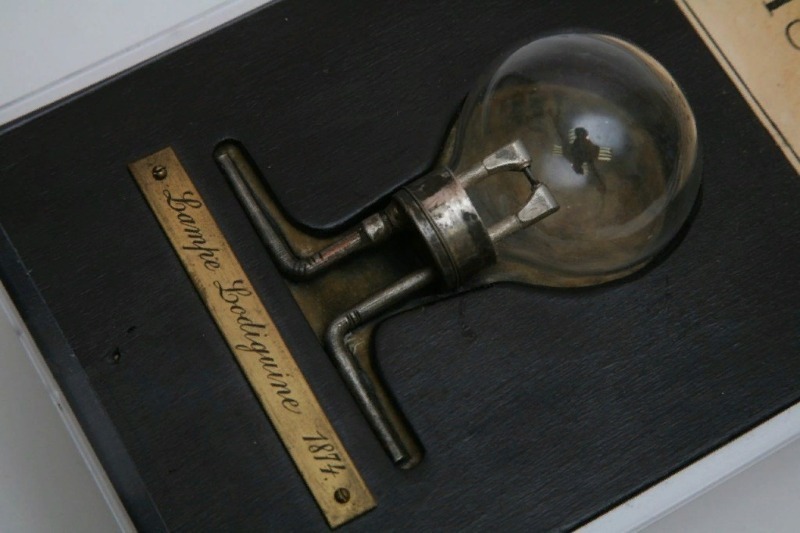
The first carbon filament lamps carbon filament lamps had an operating life of less than a dozen hours. It was significantly increased after replacing the carbon filament with a thin metal wire.
Such light was called glow, i.e., the light of a glowing metal. And the filament was called incandescent light. For example, steel heated to 1200°C glowed yellow-white, and at 1300°C it was almost white.
In the late 19th century, the carbon filament, which burned out quickly, was replaced by refractory metals such as tungsten, molybdenum, osmium, or metal oxides such as zirconium, magnesium, yttrium, etc.
Filling the flask with inert gases reduced the rate of metal evaporation from the glowing filament, and, therefore, increased the duration of its operation.
At high power, filaments were made in "branched" shapes. Projection light sources to create directional flux have a filament of complex configuration, forming a flat structure perpendicular to the axis of radiation. Inside the bulb is a light reflector, such as a thin layer of sprayed metal like silver or aluminum.
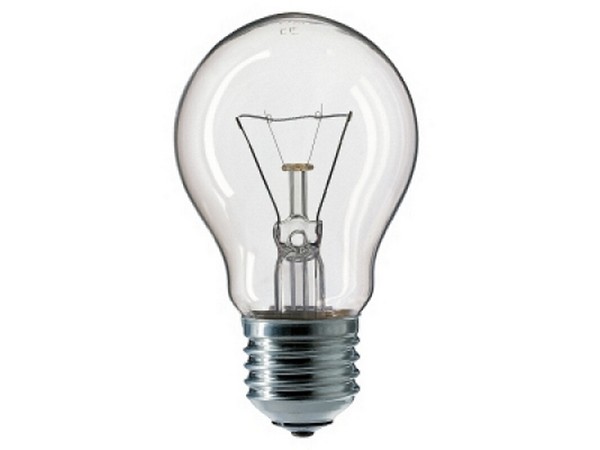
A long and thin metal filament was needed to power the lamp directly from the then-existing power grid, which had a constant voltage of 110 V. This provided increased resistance and therefore less current was needed to heat the lamp.
For dense "packing" in a small volume of transparent glass flask, the filament was placed on wire holders by bending repeatedly.
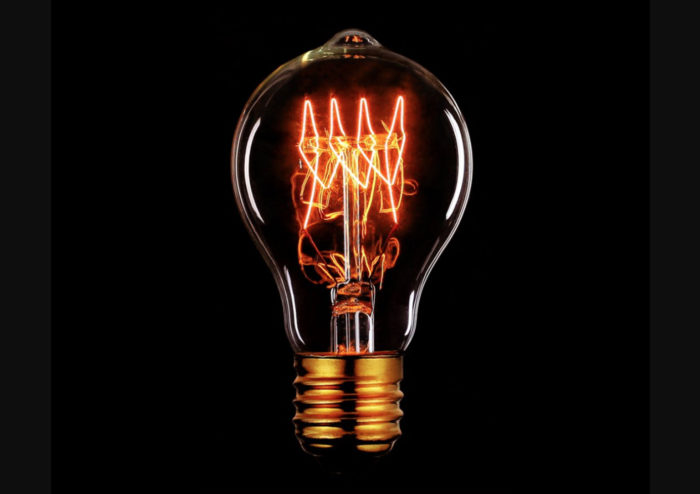
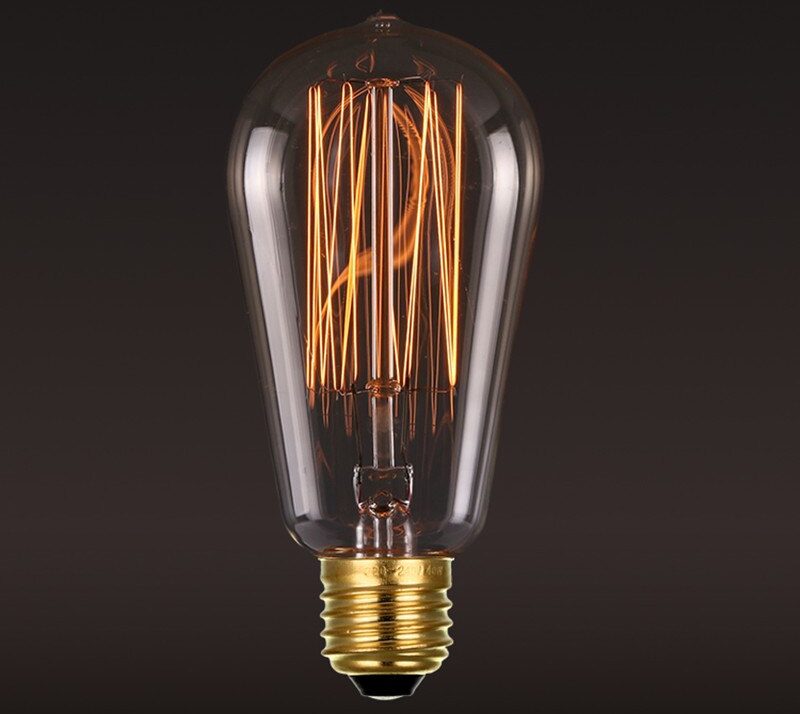
This bending of the filament complicated the design of the first light sources, which worked much longer than the "charcoal" ones. A breakthrough in the design of incandescent light bulbs was the proposal to twist the filament into a spiral. This reduced its size many times over.
An even smaller glow body was obtained by coiling a thin spiral into a second spiral of larger diameter. The double helix was called a bi-helix.
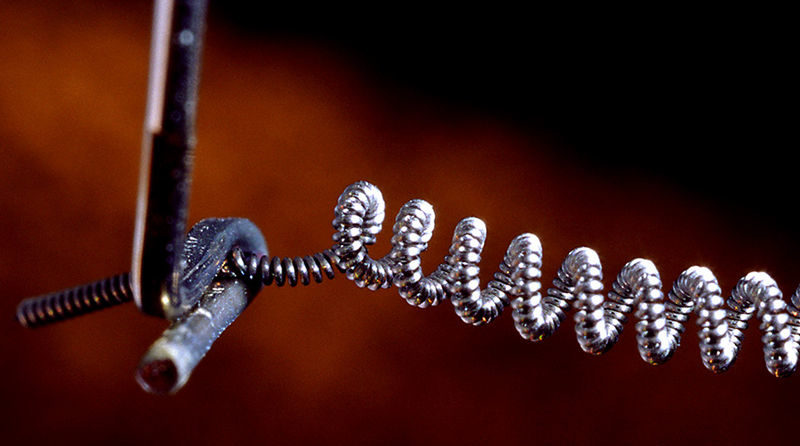
The next stage in the development of light sources was the transition to alternating current networks and the use of a transformer to reduce the supply voltage of lamps.
The main parts of an incandescent lamp
The main parts of the structure of an incandescent lamp include:
- The filament or filament body;
- a fitting to fasten the filament;
- The bulb to protect the filament from rapid combustion and external influences;
- socket for mounting in the socket and connecting to the mains
- socket contacts - screw body and the central contact in the base of the socket.
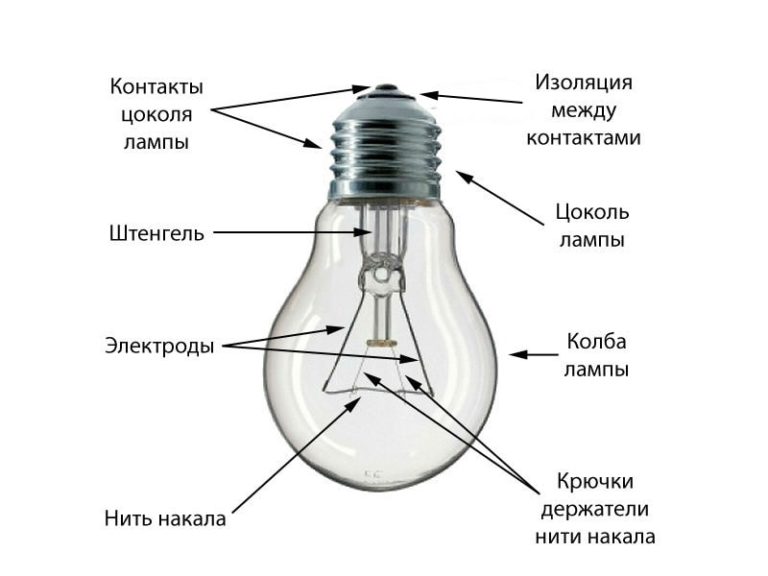
The fitting is designed to fix the filament and create the desired configuration and directionality of the light flux.
The socket is needed to fix it in the mounting socket and connect it to the bulb. In retrofit lamps, analogues of incandescent lamps, the socket houses part of the power device.
The base
On halogen light bulbsHalogen bulbs, depending on supply voltage, wattage and bulb design, have several types of bases, such as threaded bases, pin bases, bayonet bases, pin bases etc.
The system of contacts on the bases is needed to connect to the mains or power supply unit.
Bulb
Transparent LN bulb is used for:
- Protecting the filament from the outside atmosphere containing the oxidant, oxygen;
- Creation and retention of vacuum or gas composition;
- placement of phosphor and/or coatings that convert different types of electromagnetic energy into visible radiation, return of heat to the filament, conversion of invisible UV and IR radiation into light, correction of lamp shade - red, green, blue.
Incandescent body
The filament body is a filament coiled into a helix or bi-helix or thin metal strip.

Gas medium
Inert gases that fill the bulb of the lamp, such as nitrogen, argon, neon, helium. Halogen substances are added to the noble gas mixtures.
How is an incandescent lamp constructed and how does it work?
The structure of the incandescent light bulb has changed little during its development. The basic element, working on the principle of glow of a glowing substance, is the filament or body of the incandescent. This is a thin tungsten wire with a diameter of 30-40, maximum 50 microns or micrometers (millionths of a meter).
The incandescent colors begin with red and go through orange, yellow to white as the temperature increases. As the temperature increases further, the metal of the glow body first melts and then, in the presence of oxygen, burns.
Video lesson: How Modern Light Bulbs Work
A cold tungsten filament has a low resistivity. Tungsten, like most metals, has a positive temperature coefficient of resistance TCS. This means that as the filament heats up with an electric current, its resistance increases.
Before the lamp is turned on, the filament is cold and has little resistance. Therefore, a current of 10-15 times the nominal current is applied at the moment of switching on. This surge is called the start-up surge. And it's often the cause often the cause of burnout of the filament.
It takes a fraction of a second for the filament to warm up. During this time, its resistance increases. Initially high current flowing through the lamp, as the gas, bulb and all structural elements warm up, it decreases to the rated current. Thus the light source reaches the specified mode and gives the rated luminous flux. The shade of luminescence also becomes nominal, i.e. corresponding to a color temperature of 2000 to 3500 K. It is called warm white and has several color temperature gradations within this range with original names and abbreviations. For example:
- super-warm white - 2200-2400 K, referred to as S-Warm or S-W, aka very warm white or Warm 2400;
- Warm - 2600-2800 K or Warm 2700;
- Warm white - 2700-3500 K or Warm White (WW);
- Another warm 2900-3100 K or Warm 3000 (W).
The temperature of the individual lamp elements
The outer surface of the LON bulb depends on the wattage of the lamp and can be heated to 250-300℃ or more.
The filament heats up to 2000-2800℃, with a tungsten melting point of 3410℃.
In some designs, the filament is made of osmium with a melting point of 3045℃ or rhenium with a melting point of 2174. This shifts the luminous spectrum of the LN to the red zone of the visible spectrum.
What gas is in the bulb
In the first lamps the air was pumped out of the bulb. Now evacuate (pump out the air) only light bulbs of low power, no more than 25 watts.
When the tungsten wire heated to 2-3 thousand degrees, the metal vaporizes intensively from its surface. Its vapor settles on the inside of the bulb and reduces its light transmission.
Studies carried out at the beginning of the last century showed that if you fill the flask with an inert gas, the evaporation will decrease and the light yield will increase. Therefore, flasks began to be filled with one of inert gases or their mixture. Most often it is argon, nitrogen, xenon, krypton, helium, etc. Helium is used for effective passive cooling of the internal elements of the new kind of LED retrofit lamps.
This experiment is categorically not recommended for home use
Their main light-emitting element - a thin rod of artificial sapphire or glass, on which the crystals of LEDs are located. Such an emitter is called a filament. Some "experts" have confused the essence filament lamps and called them "lamps with sapphire light emitters." Although artificial sapphire in these lamps is used only as a mounting base and a passive heat sink for the LED crystals.
The failure of LNs in most cases is not due to evaporation of metal from the surface of the filament body, but to the acceleration of this process in areas of filament thickness disturbance. This occurs in the area of sharp bend of the wire or its fracture. At this point its resistance increases locally, voltage, power dissipation, and metal temperature increase. Evaporation accelerates, becomes avalanche-like, the filament rapidly decreases in thickness and burns out.
This problem was solved in the late 1950s and early 1960s, with the mass production of halogen bulbs.
Halogens such as chlorine, bromine, fluorine, or iodine were added to an inert gas or mixture. As a result, the process of metal evaporation stops altogether or slows down significantly. Atoms of these additives bind tungsten vapors, forming molecules of unstable compounds. They are deposited on the surface of the glow body. Under the influence of high temperature, the molecules disintegrate and release halogen atoms and pure metal, which precipitates on the hot surface of the filament and partially regenerates the vaporized layer.
This process is intensified by increasing pressure. This increases the filament temperature, lifetime, light output, efficiency and other characteristics. The emission spectrum is shifted to the white side. In gas-filled lamps, the darkening of the bulb surface from the inside by tungsten vapor is slowed down. Such light sources are called halogen light sources.
Electrical Specifications
The electrical characteristics of incandescent lamps include:
- electrical power, measured in watts - W, the range of available models - from a few watts (a flashlight bulb - 1 W) to 500 and even 1000 watts;
- luminous flux, Lm (lumen), is related to power: from 20 Lm at 5 W to 2500 Lm at 200 W, at higher power the luminous flux is higher;
- Luminous efficacy, energy efficiency or efficiency factor, Lm/W - how many lumens of light in the form of luminous flux gives each watt of power consumed from the network or power source
- Light intensity or luminance, cd (candela);
- color temperature - the temperature of a conventional black body that emits light with a particular shade.

Purpose of an electric lamp
Electric lamps can be divided into several types by application - for public, technical and special use.
The main public use is to provide any person, animals and birds with artificial light at night or in a dark place in the room.
Using light, people prolong their daily activity for several hours. This can be work and study processes, household chores. Safety on the roads, the ability to provide medical care in the evening and at night, etc. improves.
Lamps are actively used in livestock farms and poultry farms, for growing plants in greenhouse complexes. They are illuminated with light of a certain spectrum and magnitude of luminous flux. Fish farming also requires light with a specific spectral composition.
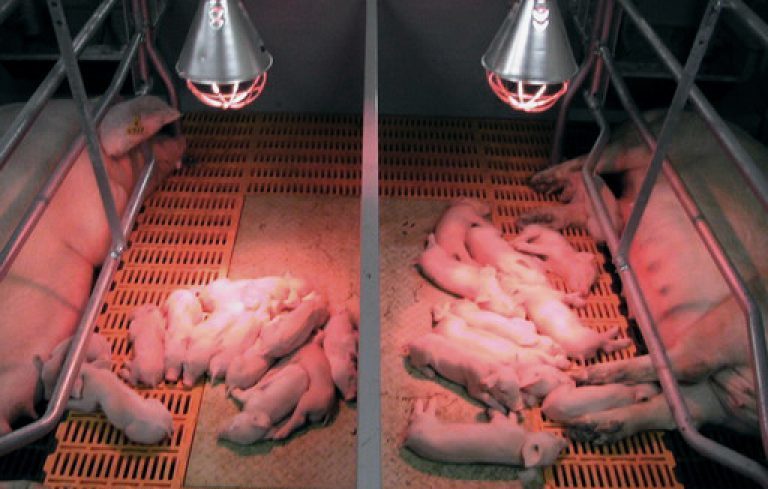
Technical purpose. In manufacturing, devices that give visible and invisible light are used for technological purposes. Examples:
- A person requires a high level of illumination in the workplace for precise and important work;
- IR - Infrared radiation is used in industry, for example, for contact-free heating of construction parts or in climatic engineering for heating a person working in the open frosty air, in military and hunting engineering - night sights for weapons, night vision devices, etc;
- UV-radiation is used in dentistry for fast hardening of fillings, dental prostheses fabrication, etc., in medicine and sanitation - for in medicine and in sanitation for disinfecting rooms, instruments, clothing and surfaces.In medicine and sanitation the disinfection of rooms, tools, clothing, furniture surfaces, air, water, medicines, etc.
Special purpose lamps are used in outdoor and indoor light advertising, forensics, aviation and astronautics, light accompaniment of shows, etc.
Main types and characteristics
The main types of incandescent lamps include:
- General-purpose lamps. Called by the abbreviation LON. Usually these are devices with a power of 25, 40, 60, 75 and 100 watts. The most common is 60 W. But industrially produced LONs are rated at 150, 200, 500 and even 1000 watts.
- Halogen incandescent lamps. These are made to operate from 220 or 110 V high voltage and low voltage. In this case they are powered by a step-down transformer.

Varieties of low-voltage halogen lamps:
- capsule, have the form of all-glass tubes with different bases - end pins GY6.35 or G4;
- reflector, having a reflective element, with a diameter of 35 to 111 mm, GZ10 socket with options.
High-voltage. The main voltage is 220-230 V, 50 Hz. These lamps have more versions:
- linear in the form of a tube of glass with R7S bases;
- cylindrical - E27, E14 or B15D socket;
- with a removable or additional bulb.
The last model has a compact halogen bulb or tube mounted rigidly inside the lamp. It is welded to the central core of a regular LON bulb and has flexible leads connected to a standard Edison E27 or E14 base. With a power consumption of 70-100W, it provides 20-30% more luminous flux than a conventional incandescent bulb.
These models have a higher energy efficiency reaching 12-25 Lm/W, while ordinary LON light sources have 3-4 to 10-12 Lm/W.
Service life of halogen models is from 4-5 to 10-12 thousand hours.
Classification of lamps by function and design

Decorative bulbs
In recent years, retro lamps imitating vintage Edison light bulbs have appeared.
In addition, they imitate "candle", "candle in the wind", "cone", "pear", "ball", etc. by the shape of the bulb.
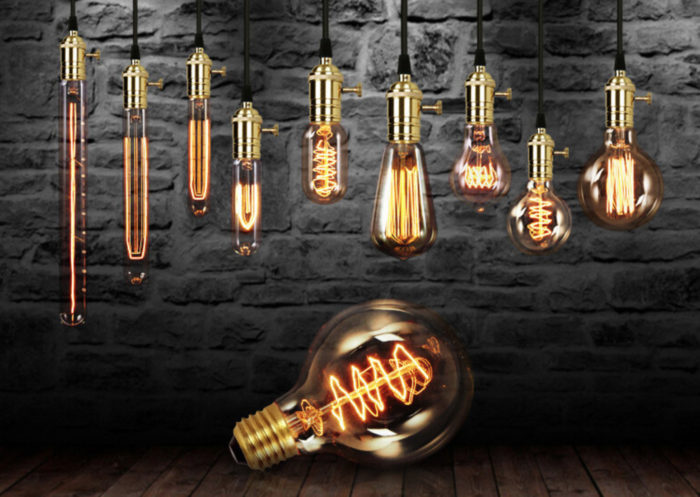
Mirrored
Mirrored lamps have a part of the bulb covered on the inside with a reflective layer. Most often it is a coating of metal - silver, aluminum, gold, etc. This layer can be thin and translucent or thick and opaque.
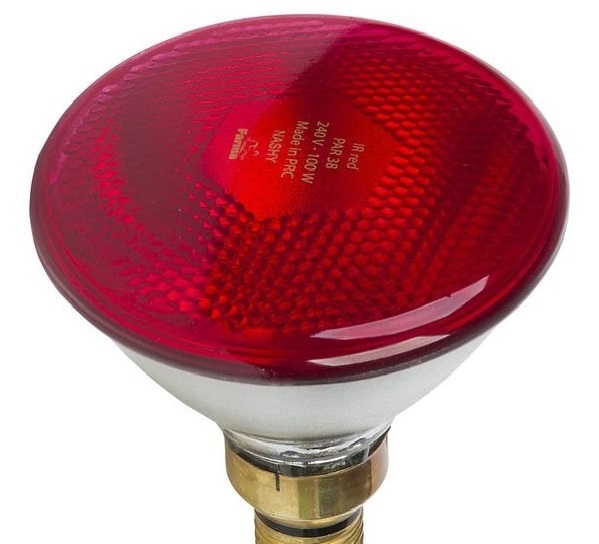
Mirrored designs are used in manufacturing for absolutely pure process heating, such as semiconductor manufacturing with the highest purity of materials. In this case, the disadvantage of incandescent lamps - the high flux of infrared radiation - becomes their unsurpassed advantage.
Such lamps are used in luminaires with a narrow swivel beam of light.
Signal
Signal lamps are flashing light sources. Usually in the form of flashing beacons, e.g. on company cars, on airplanes and helicopters, for transmitting light messages in the navy, etc. They have a thin incandescent filament that provides a rapid brightness gain.
Transport
This type of lamps is designed for use in different types of transport - cars, railroads and subways, river and sea vessels. The main requirement to them is resistance to vibration and shock. For this purpose, the filament is made short and mounted on many supporting elements. The bases of such lamps are bayonet Swan, pin or soffit. They prevent the device from unscrewing and falling out of the socket.
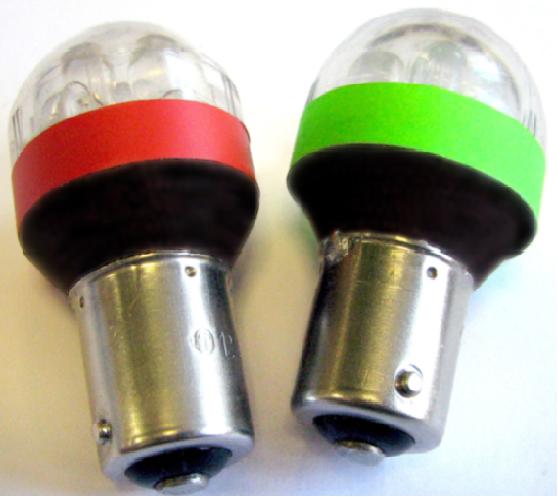
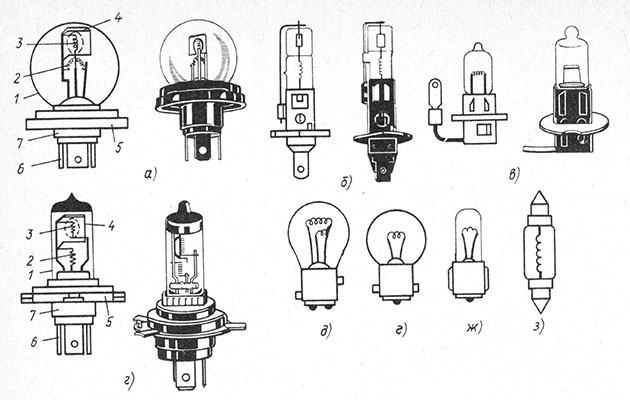
Illumination
It is clear from the name that lamps are used for illumination. Therefore, their bulbs are made of glass of different colors - blue, green, yellow, red, etc.

Double stranded
The diagram of such an incandescent lamp: there are two separate filaments in one bulb. For example, in a car headlight, a dual filament bulb is used as follows:
- when voltage is applied to one filament, the dipped light comes on - the stream of light is "pressed" against the roadway and the beam spreads for several tens of meters;
- after switching to the second filament, the light rises and its range can reach hundreds of meters, and the flux will be much greater.
Such lamps can also be in the rear lamp. The first filament is for the parking lights, the second is for the stop light.
In traffic lights, dual filament lamps increase their reliability. Duplication allows the device to operate either with one filament or to turn on the second one after the first one has burned out. And, for example, on railroads, the reliability of signaling is a guarantee of transportation safety.
General, local purpose
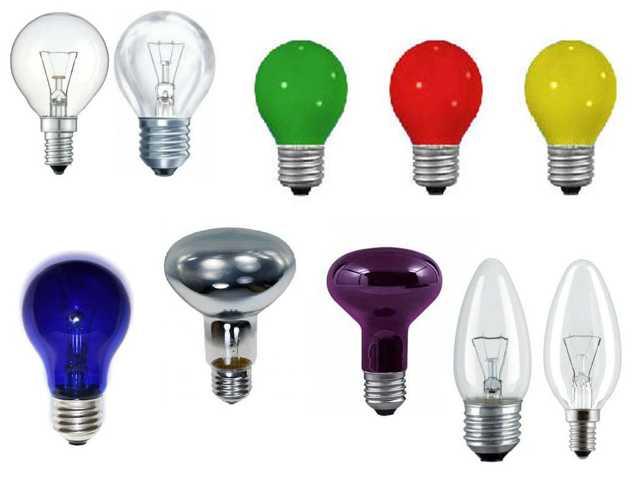
Top row, left to right - lamp with E14 socket - for chandeliers, wall lamps and small lamps, with E27 socket - general purpose, green, red, yellow - illumination.
Bottom row: blue - medical purposes for procedures, mirror with a reflector - for photographic works or special lighting, with violet glass, the two outer - decorative with a bulb "candle" and socket E27 and E14.
Pros and cons
The advantages of incandescent bulbs:
- low price - simple and inexpensive materials, design and technology worked out for decades, mass automated production;
- Relatively small dimensions;
- Voltage surges in the mains do not cause immediate failure;
- starting up, as well as restarting - instantaneous;
- when powered by alternating current with a frequency of 50-60 Hz, brightness pulsations are barely noticeable;
- brightness of the luminescence is adjustable by dimmers;
- the emission spectrum is solid and familiar to the eye - similar to the solar spectrum;
- Almost complete repetition of the characteristics of lamps from different manufacturers;
- The color rendering index Ra or CRI - quality of reproduction of color shades of illuminated objects - is equal to 100, which fully corresponds to the indicator of the sun;
- The small size of the compact filament gives clear shadows;
- high reliability in conditions of severe frost and heat;
- design allows mass production of models with operating voltages of fractions to hundreds of volts;
- AC or DC power supply in the absence of starting devices
- active nature of the filament resistance provides a power factor (cosine φ) equal to 1;
- indifferent to radiation, electromagnetic pulse, interference;
- practically no UV component in the radiation;
- provided normal operation with frequent on/off switching of lights and many others.
The disadvantages include:
- nominal life of LON - 1000 hours, in halogen incandescent lamps - from 3 to 5-6 thousand, in fluorescent - up to 10-50 thousand hours, LED lamps - 30-150 thousand hours and more;
- Glass bulb and thin filament are sensitive to shocks, vibration may cause resonances at certain frequencies;
- High dependence of energy efficiency and lifetime on supply voltage;
- Power conversion efficiency into visible light does not exceed 3-4%, but increases with increasing power;
- bulb surface temperature depends on the power and is: for 100W - 290°C, for 200W - 330°C, 25W - 100°C;
- when switching on, the current jump before the filament warms up can be ten times higher than the rated current;
- Luminaire sockets and fittings must be heat resistant.
How to increase lamp life
There are many ways to increase lamp life. The most used are:
- limiting the inrush current by including a thermistor in series with the lamp, the high resistance of which decreases as it is heated by the inrush current;
- soft start with manual dimming by thyristor or triac dimmer;
- Power supply of the lamp via a powerful rectifier diode, i.e. rectified voltage of the half-sine wave;
- series connection of lamps in pairs in multi-lamp luminaires, e.g. in chandeliers.
Modern industry produces a large number of different types of incandescent lamps with a wide range of operating voltages and wattages, with different shades of luminescence, configuration of bulbs and bases. Such assortment allows choose necessary lamp for any use.




